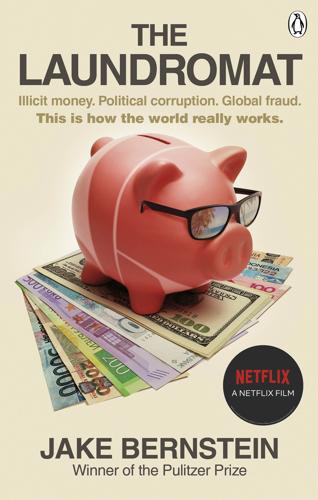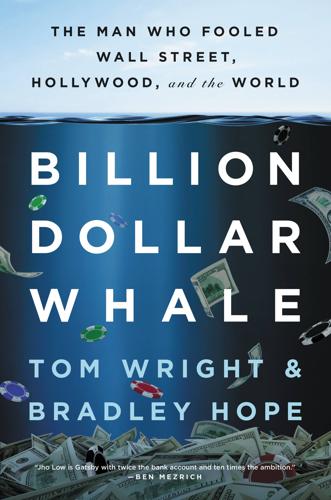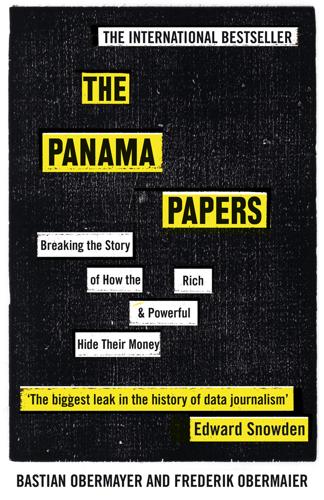
The Hidden Globe: How Wealth Hacks the World
by
Atossa Araxia Abrahamian
Published 7 Oct 2024
Diplomats, I discovered, were only the visible tip of Geneva’s special cases. On the city’s main drag, private banks stored information that even the Swiss government couldn’t access, about the secret accounts of deposed monarchs and the ill-gotten gains of multinational evaders and avoiders. And a short walk from the pool where I learned to swim stood the Geneva Freeport, a cordoned-off warehouse that operated outside Swiss customs regulations. Conceived centuries ago to allow merchants to store grain, the freeport is where oligarchs now stash art, wine, jewels, and other luxury items. On one hand, Geneva’s composition epitomizes a familiar kind of internationalism: the tangible, imperfect, often lovely kind that brings people of the world together in one place at one time, in peace.
…
“It was clear that the outer room was where Medici received prospective buyers, and where objects for sale were displayed in secure and discreet circumstances. It was equally clear…that Medici had never expected anyone to come calling here—everything was just lying around, with no attempt at concealment.” The warehouse in question was not your average mini storage. It was the Geneva Freeport: a place where, since 1888, goods have entered the building and remained there, perhaps even for lifetimes, accruing value, hiding from scrutiny, evading taxes, even changing hands, all without leaving the confines of the warehouse. The warehouse had stood largely unnoticed in a nondescript commercial district of Geneva for years, until all of a sudden, it found itself at the center of spectacular highway accidents, unscrupulous millionaires, a team of cops called the “art squad,” and real-life tomb raiders.
…
An oenologist told me that when she worked at a vineyard in Bordeaux, the wine they produced was bottled and immediately shipped off to a tax-free warehouse in London to age. “I don’t think the buyers ever drank it,” she said. There used to be a natural limit to how long perishables could be left in this liminal state. After all, wheat rots. Rice goes bad. Steel rusts. Even wine can be stored for only so long without climate control. When the Geneva Freeport opened in the late nineteenth century, its main feature was a large grain silo, but that fell into disuse as new kinds of wealth slithered into the city: gold bars in times of crisis, humanitarian supplies in times of war, and, in our more recent decades of growing economic inequality, the surplus lucre of the 1 percent.

The Laundromat : Inside the Panama Papers, Illicit Money Networks, and the Global Elite
by
Jake Bernstein
Published 14 Oct 2019
The men were detained but to date have avoided trial or prison.33 8 THE ART OF SECRECY Just as Switzerland excelled at stashing the money of foreigners in its banks, the alpine nation performs a similar service for art. The art trade in Switzerland is a multibillion-dollar business.1 At its center is the Geneva Freeport, more than 600,000 square feet of storage space in an industrial area west of the city.2 There, in the main complex, behind security fencing, stands a row of multistory gray-red warehouses. They contain approximately 1.2 million pieces of art,3 everything from Roman antiquities to an estimated one thousand Picassos.4 Together the goods inside the Geneva Freeport are conservatively valued at more than $100 billion.5 Unlike a museum, nobody ever sees all these treasures together.
…
As long as the art resides within the Freeport, it is tax free. One can buy a painting at auction in New York, ship it to the Geneva Freeport, and no government will collect a cent until it leaves the confines of this concrete tax haven. While the Geneva repository is the oldest, other freeports specializing in art can be found in Luxembourg, Monaco, Singapore, Beijing, and Delaware. They are popular with the wealthy and the unscrupulous. In 2016, Italian police pried open crates in the Geneva Freeport that had sat for fifteen years in a vault rented by an offshore company.6 Inside they found a priceless collection of looted Roman and Etruscan artifacts stockpiled by a bankrupt English art dealer sentenced to jail for lying about his assets in court.
…
In 2014, 76 percent of collectors purchased art as part of an investment strategy.10 Works of art that once decorated mansion walls as showy status symbols or as the joyful passions of knowledgeable collectors serve instead as investments to be hoarded, often in secret, while their value increases. This change in the art business is revealed in the Mossfon files. The largest single collection of Picassos in private hands, outside of the Picasso family, is believed to reside in the Geneva Freeport. The paintings belong to the Nahmad family, Syrian Jews who pioneered the commodification of fine art, buying paintings and holding them in the Geneva Freeport until they reached an attractive sales price. The family was also a longtime Mossfon customer, dating back to the days of Antoni Guerrero’s Geneva office in the early 1990s. The Nahmads made their first fortune speculating on currencies.

Billion Dollar Whale: The Man Who Fooled Wall Street, Hollywood, and the World
by
Tom Wright
and
Bradley Hope
Published 17 Sep 2018
Its dealers, from small-time auctioneers in New York, Hong Kong, or Geneva to global behemoths like Sotheby’s and Christie’s, were under no legal obligation to disclose the identity of their customers, and even they sometimes didn’t know the beneficial owner behind anonymous shell companies that bought Monets or Rothkos. While Swiss bank secrecy had been eroded, the Geneva Freeport did not have to list its clients. A Swiss art warehouse owner called Yves Bouvier, who was involved in the Geneva Freeport, in 2010 opened a similar fortress for the rich in Singapore, near Changi airport. The New York Times dubbed these entrepôts the “Cayman Islands of the art world.” Occasionally there was a chink in the armor of secrecy, like in 2013, when Swiss customs officers on a routine inspection of the Geneva Freeport impounded nine artifacts looted from Libya, Syria, and Yemen, ranging from Roman-era bas-reliefs to Greek statues.
…
The warehouses look just like any nondescript building, with storage vans parked outside, and to a passerby they could be a depot for a major logistics company, except the complex is secured more tightly than any normal warehouse, with iris scanners on the doors. This is the Geneva Freeport, a warehouse for the überelite to stash their possessions—gold bars, bottles of rare wine, and, most recently, art. Freeports have a long history in global commerce as a place for traders to temporarily deposit commodities or other goods without incurring local taxes. Authorities were willing to forgo the revenues if it led to more economic activity and investment. The Geneva Freeport, majority-owned by the state of Geneva, started out in the nineteenth century as a tax-free waypoint for grain, timber, and other commodities.
…
If opened to the public, the warehouses would have been the finest museum anywhere, with more works than the Louvre or the Prado. Not only were there tax benefits, but this was a discreet place, and authorities asked few questions about the provenance of the items inside. It was a money launderer’s paradise. Perhaps Low learned about the Geneva Freeport from Al Qubaisi, who had cars there, including a Bugatti Veyron and a Pagani Huayra. In the early phase of his scheme, Low concentrated on mansions and hotels, as well as gambling and parties. In the United States, property agents didn’t have to declare the names of buyers who used cash, and Low had been able to hide behind a wall of shell companies.

The Panama Papers: Breaking the Story of How the Rich and Powerful Hide Their Money
by
Frederik Obermaier
Published 17 Jun 2016
It asks Mossack Fonseca to have the Mossfon-appointed directors of International Art Center sign a document attesting that the company owns Modigliani’s Seated Man with a Cane. Two documents are attached: a proof of purchase issued by Christie’s auction house in 1996 and what appears to be some kind of certificate of ownership. Research is so easy sometimes! Both documents name International Art Center as the owner and state that the painting is in storage at the Geneva Freeport, where works owned by the Nahmads are also stored. A long article published in the Wall Street Journal in October 2014 helps us understand the bigger picture. The story, as told by the Wall Street Journal, begins in Paris in 1946 when the Jewish art collector Oscar Stettiner writes a letter to the authorities.
…
The G20 countries respond with a new catalogue of measures, while the EU parliament even sets up a dedicated committee of inquiry. A long list of more concrete measures has also been carried out. Raids and searches take place in several countries. The authorities search UEFA’s offices and its marketing agency in Switzerland, Amedeo Modigliani’s Seated Man with a Cane is seized at the Geneva Freeport, and officials search the Mossack Fonseca offices in El Salvador and Peru. Then, finally, police raid the Mossack Fonseca headquarters in Panama. Investigators work through the night, spending twenty-seven hours working their way through the building floor by floor, collecting what appears to be a huge volume of data.